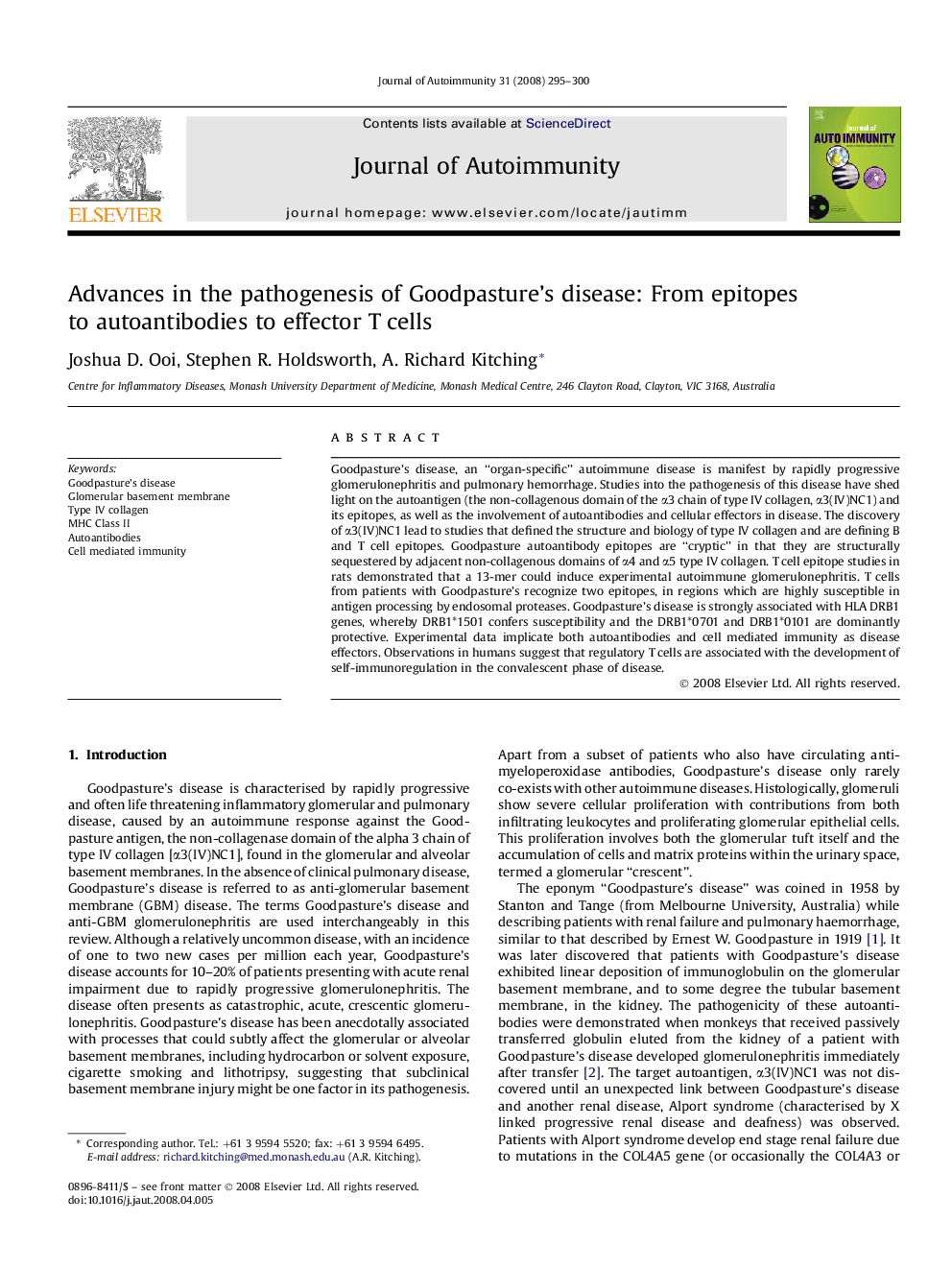| Article ID | Journal | Published Year | Pages | File Type |
|---|---|---|---|---|
| 3368371 | Journal of Autoimmunity | 2008 | 6 Pages |
Goodpasture's disease, an “organ-specific” autoimmune disease is manifest by rapidly progressive glomerulonephritis and pulmonary hemorrhage. Studies into the pathogenesis of this disease have shed light on the autoantigen (the non-collagenous domain of the α3 chain of type IV collagen, α3(IV)NC1) and its epitopes, as well as the involvement of autoantibodies and cellular effectors in disease. The discovery of α3(IV)NC1 lead to studies that defined the structure and biology of type IV collagen and are defining B and T cell epitopes. Goodpasture autoantibody epitopes are “cryptic” in that they are structurally sequestered by adjacent non-collagenous domains of α4 and α5 type IV collagen. T cell epitope studies in rats demonstrated that a 13-mer could induce experimental autoimmune glomerulonephritis. T cells from patients with Goodpasture's recognize two epitopes, in regions which are highly susceptible in antigen processing by endosomal proteases. Goodpasture's disease is strongly associated with HLA DRB1 genes, whereby DRB1*1501 confers susceptibility and the DRB1*0701 and DRB1*0101 are dominantly protective. Experimental data implicate both autoantibodies and cell mediated immunity as disease effectors. Observations in humans suggest that regulatory T cells are associated with the development of self-immunoregulation in the convalescent phase of disease.
